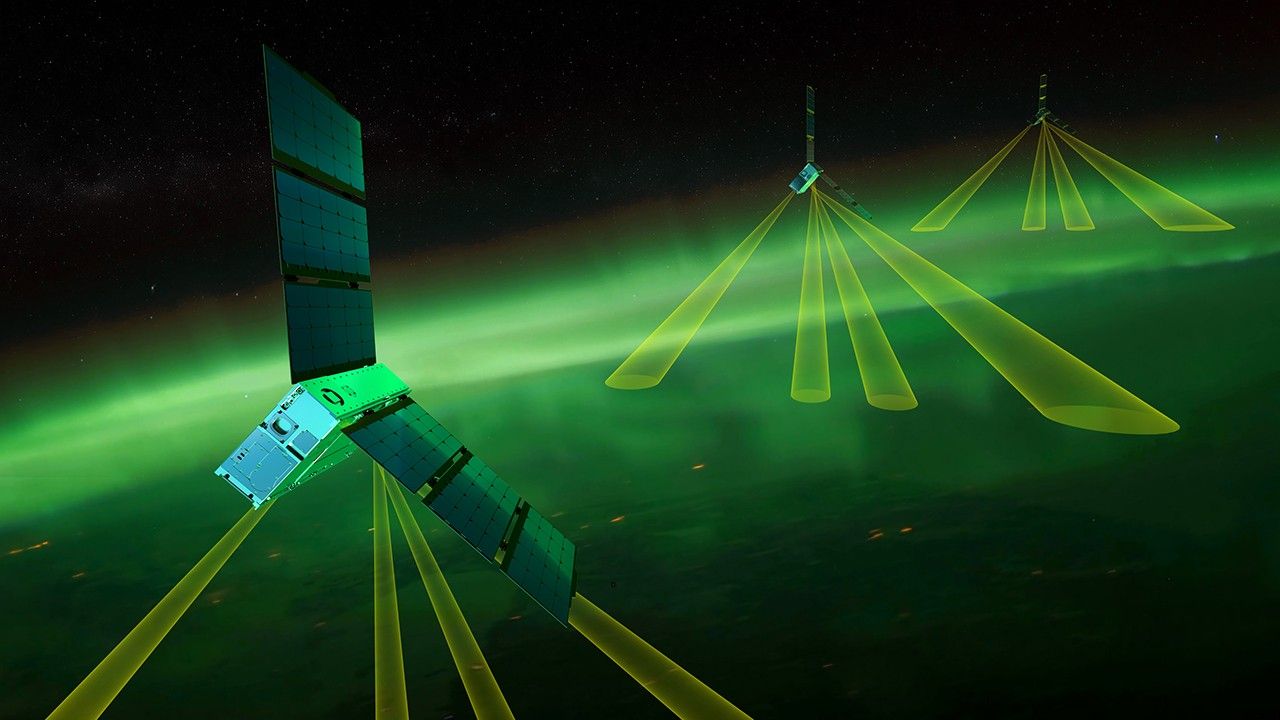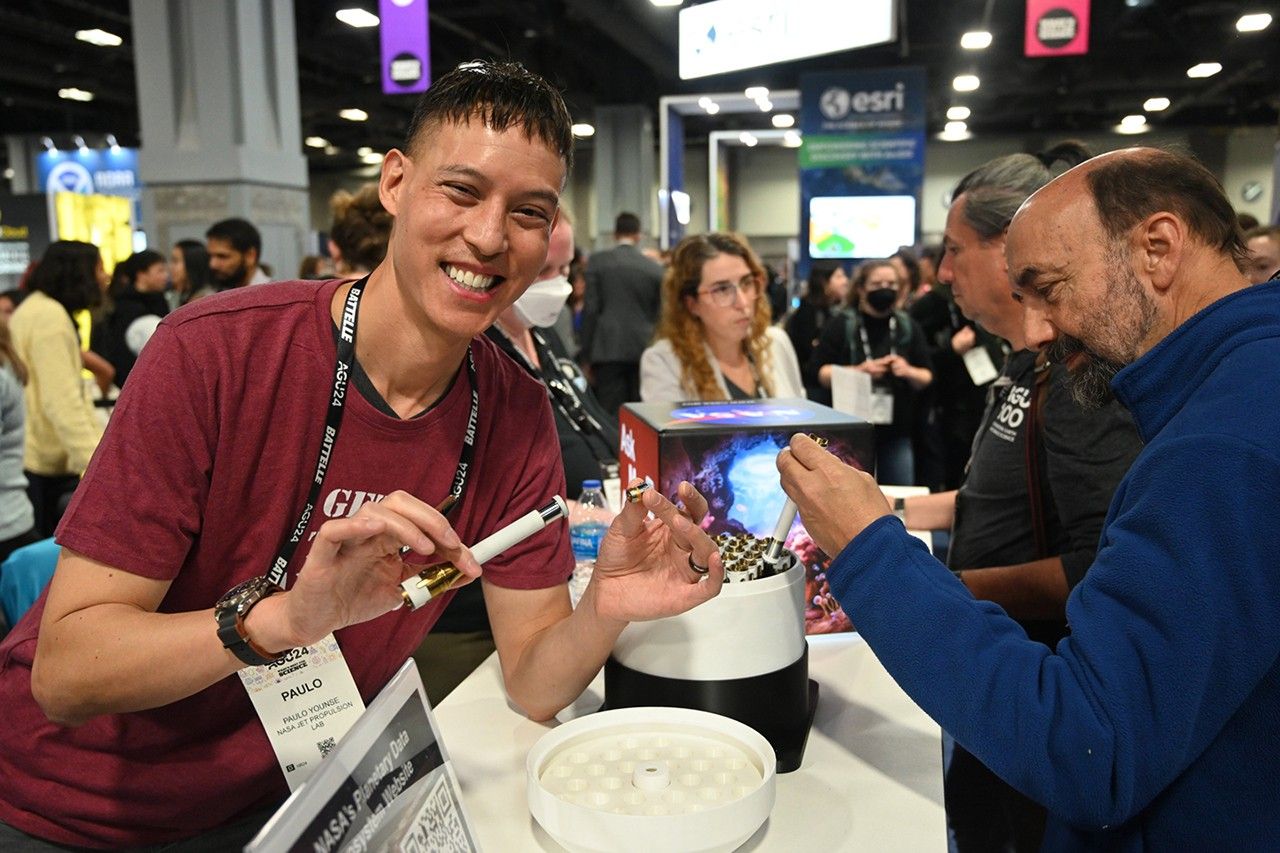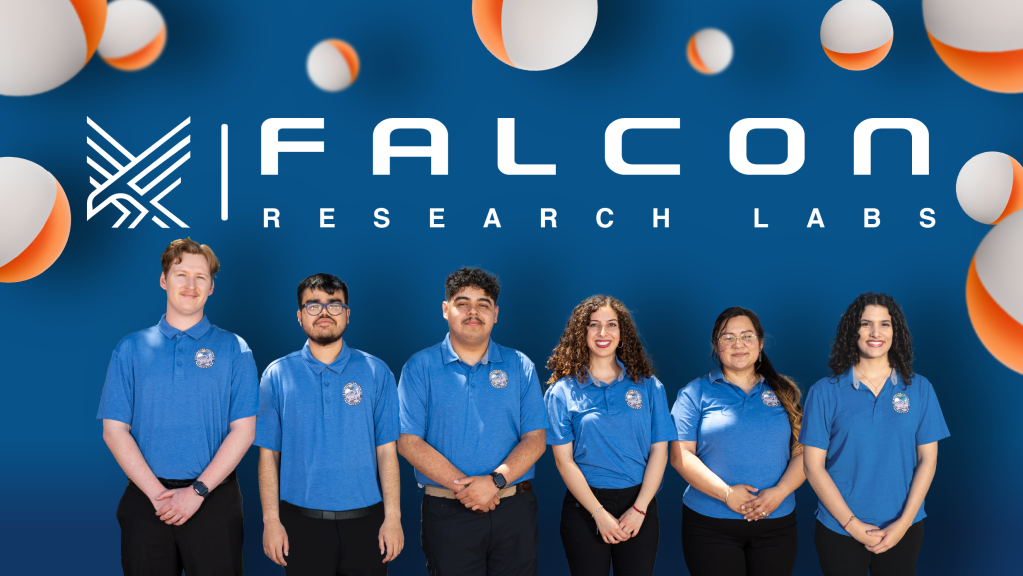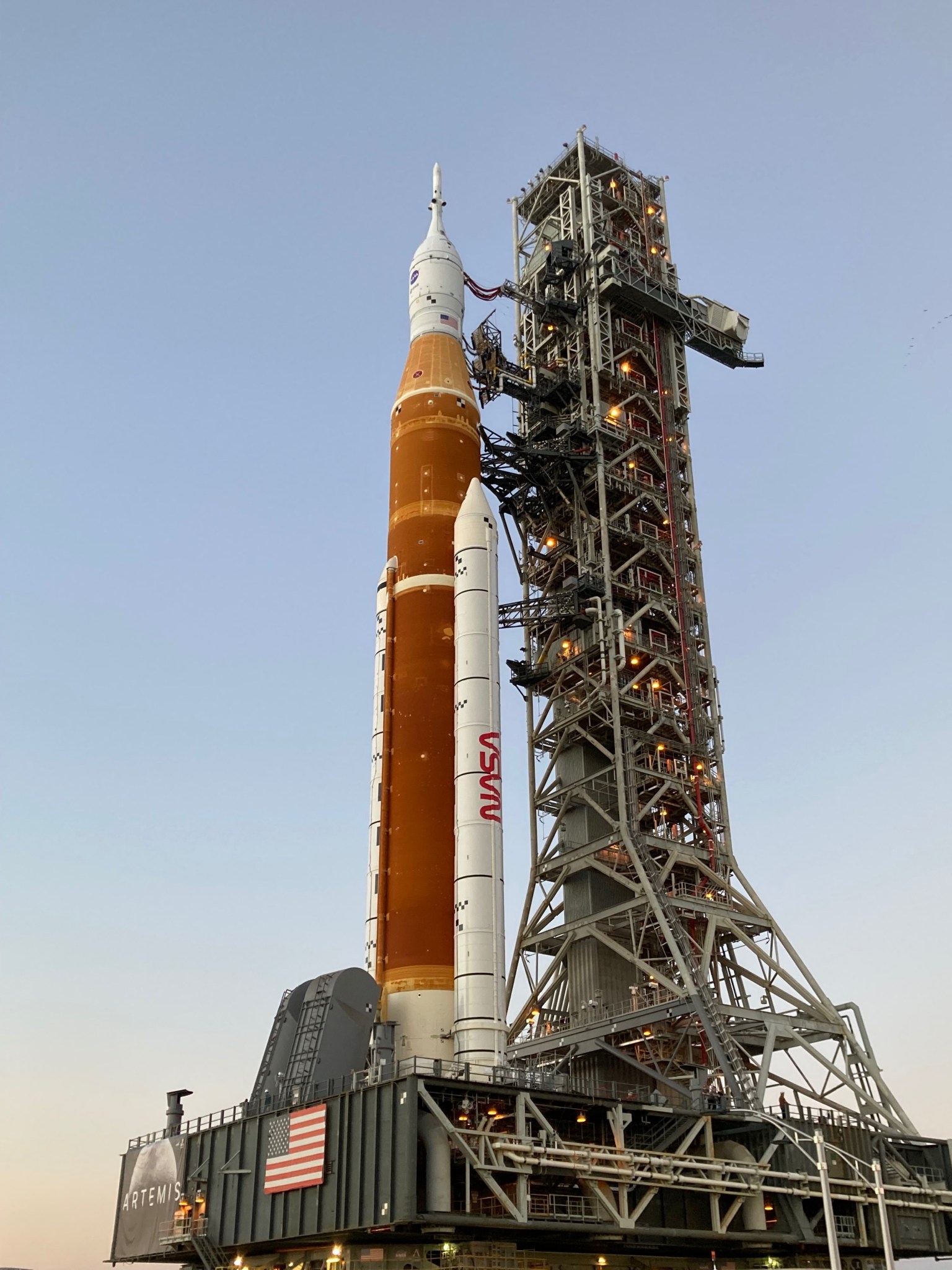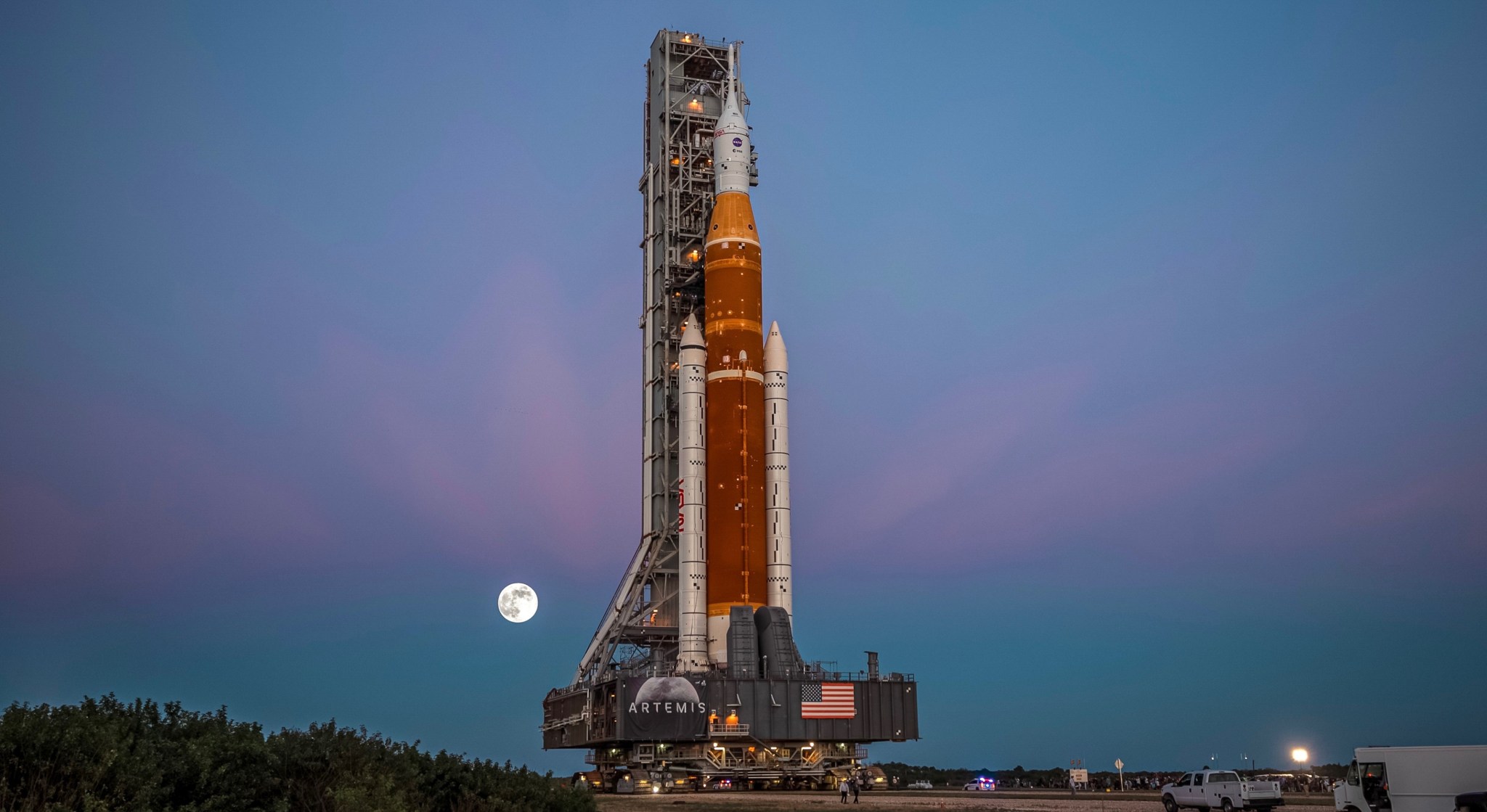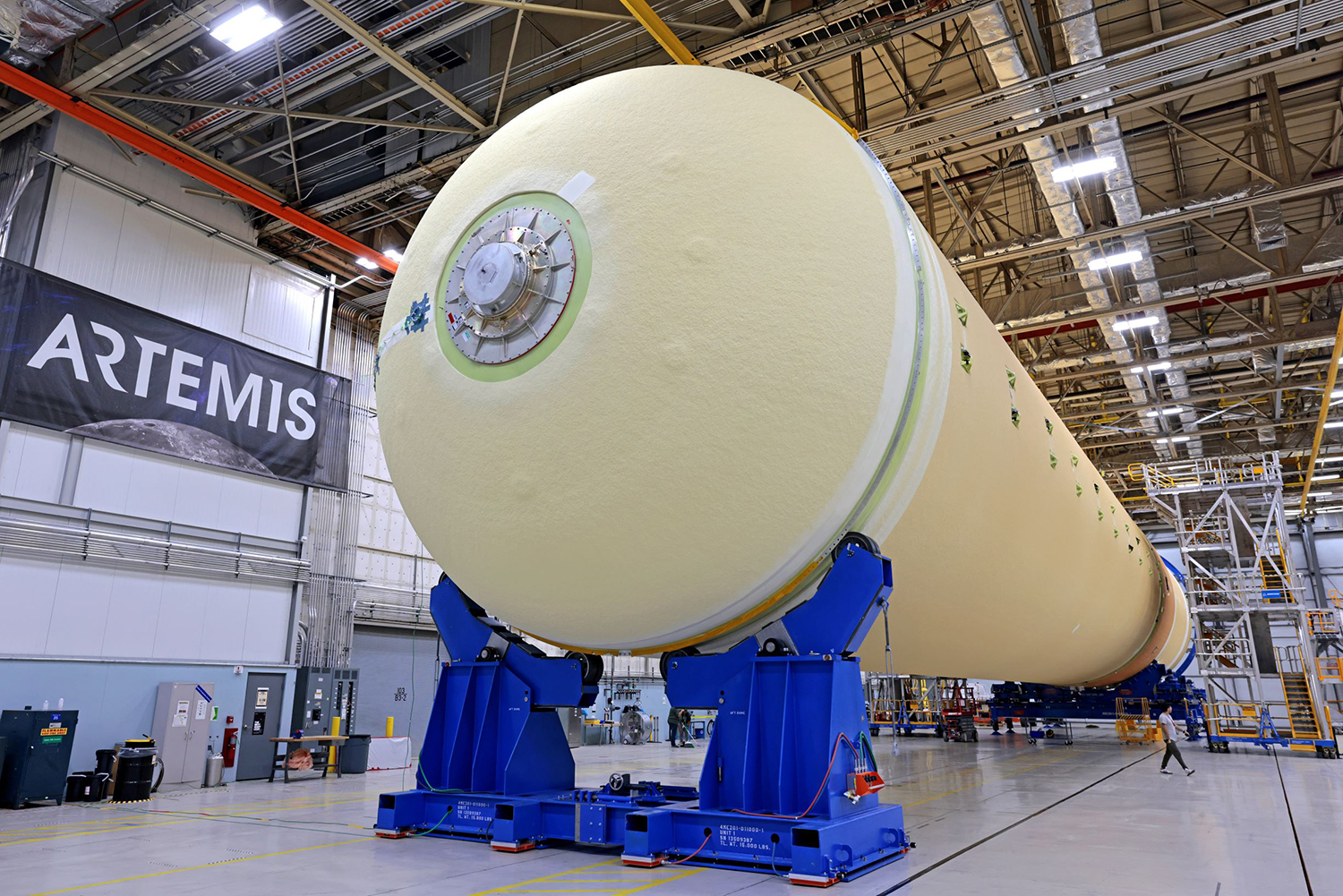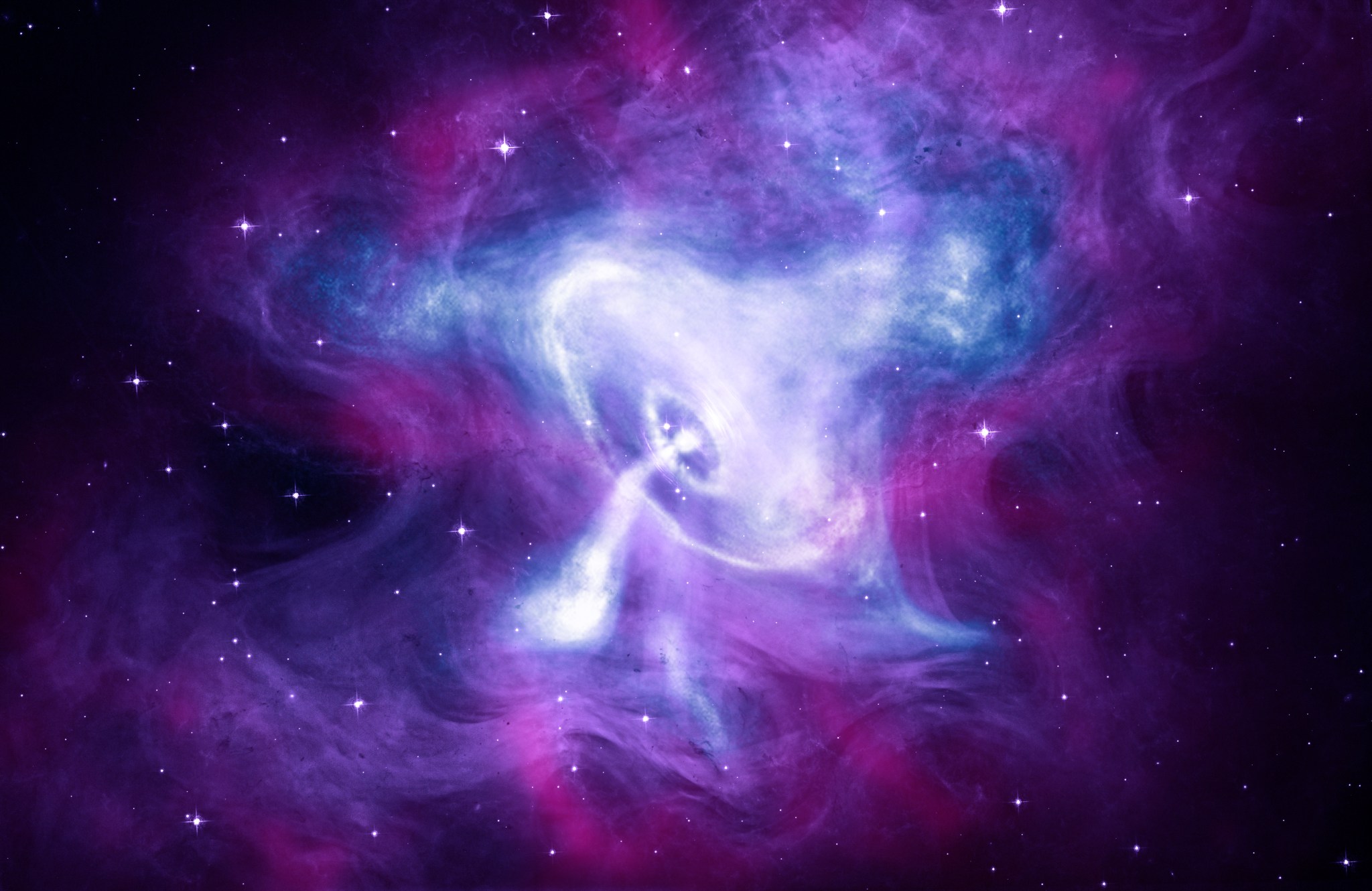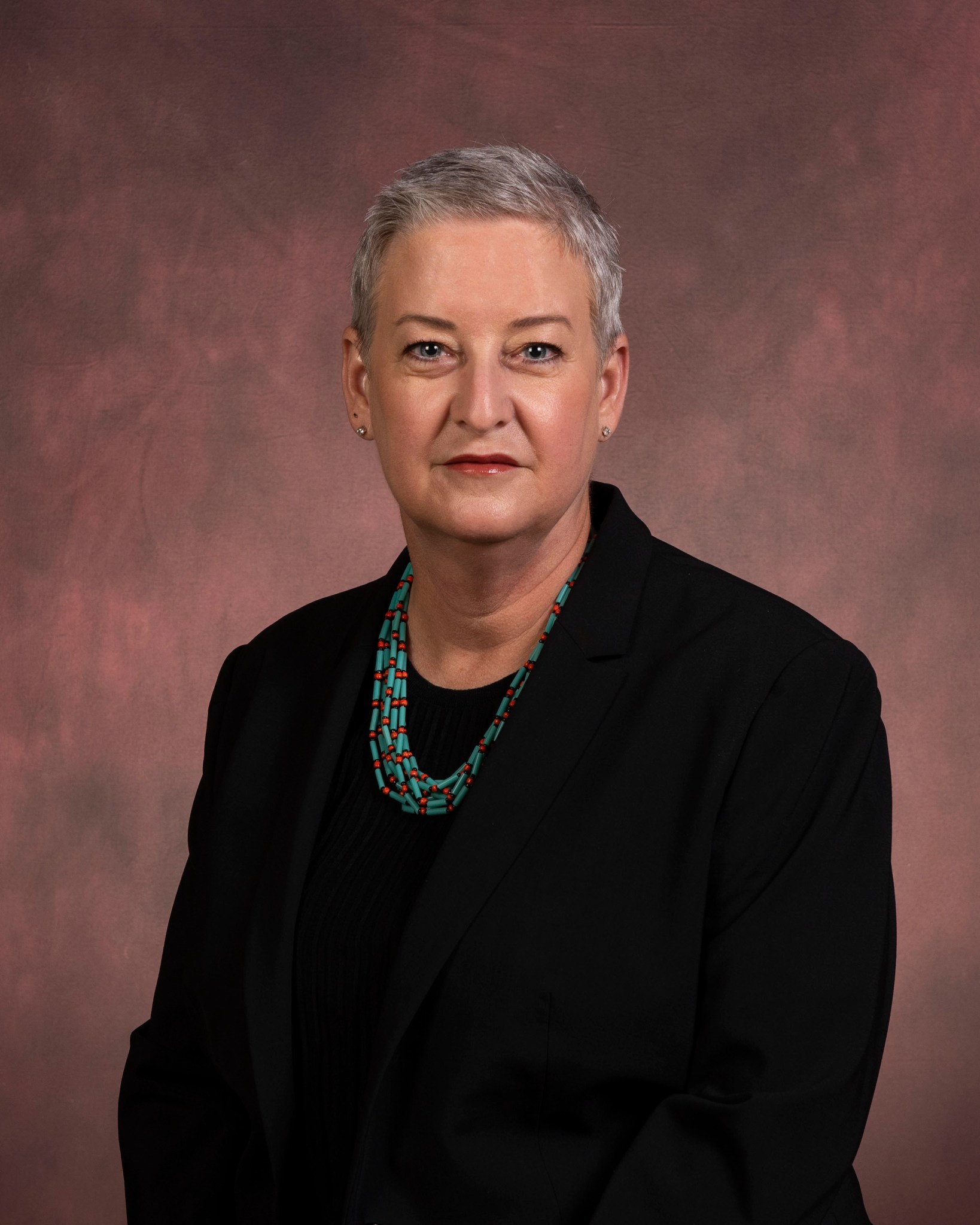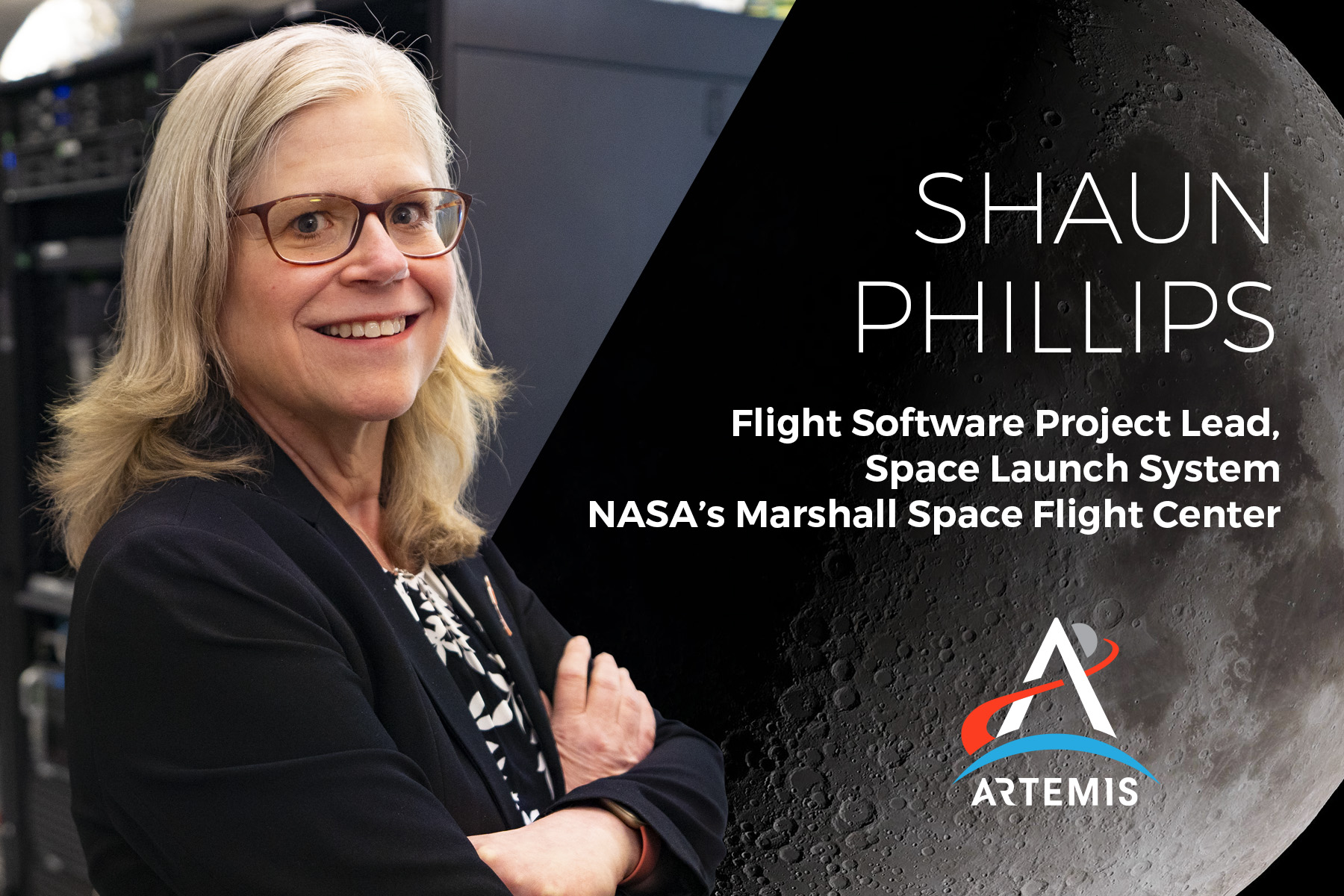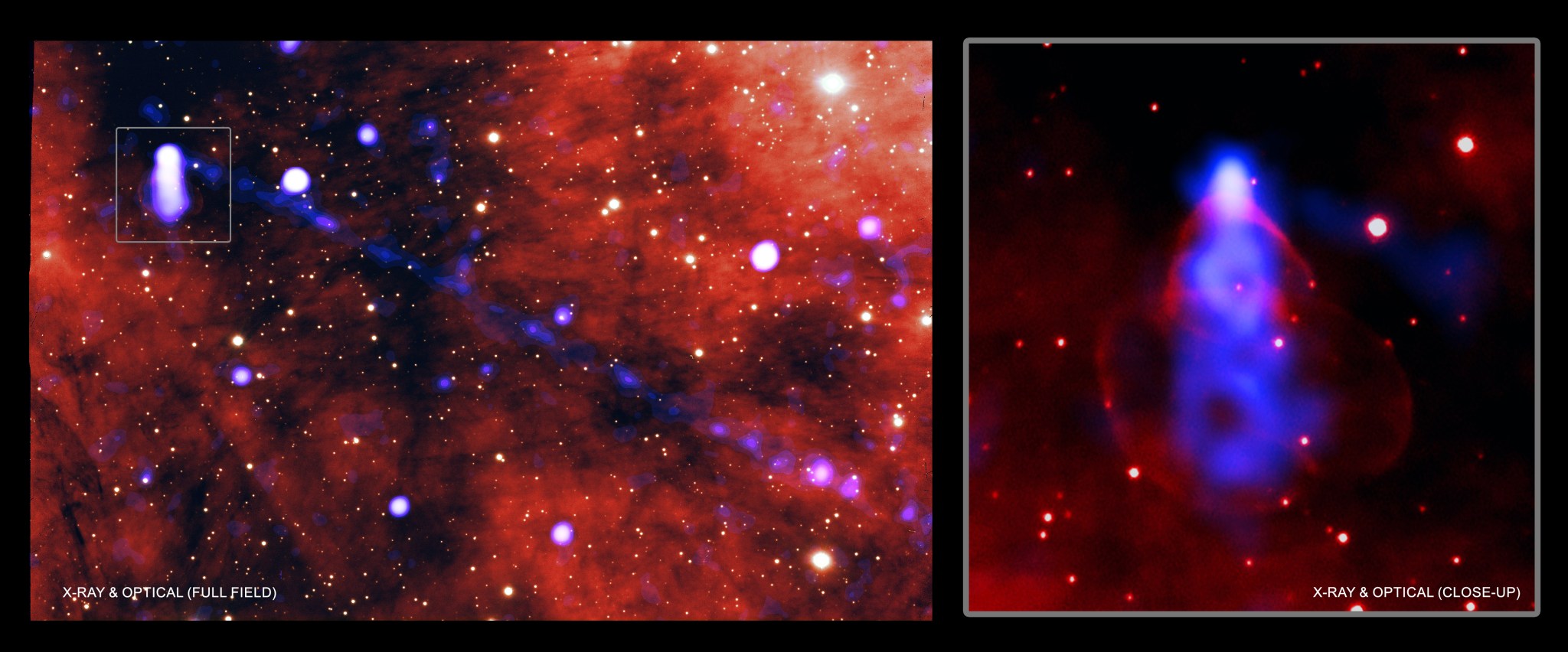NASA’s Mega Moon Rocket, Spacecraft Complete First Roll to Launch Pad
NASA’s Space Launch System (SLS) rocket with the Orion spacecraft atop arrived at Launch Pad 39B at the agency’s Kennedy Space Center on March 18 in preparation for a final test before its Artemis I Moon mission.
The uncrewed flight test will pave the way for missions to land the first woman and first person of color on the Moon under Artemis, and the rocket rolled to the pad for a final test before launch.
“From this sacred and historical place, humanity will soon embark on a new era of exploration,” NASA Administrator Bill Nelson said. “Artemis I will demonstrate NASA’s commitment and capacity to extend humanity’s presence on the Moon – and beyond.”
Stacked on the mobile launcher and mounted on the crawler-transporter for a journey from the Vehicle Assembly Building to Launch Pad 39B, it took 10 hours and 28 minutes for SLS and Orion to reach the launch pad 4 miles away. The trip began at 4:47 p.m. CDT on March 17, and the 322-foot tall, 3.5-million-pound rocket and spacecraft arrived at the pad at 3:15 a.m. on March 18.
The upcoming final test, known as the wet dress rehearsal, will run the Artemis I launch team through operations to load propellant into the rocket’s tanks, conduct a full launch countdown, demonstrate the ability to recycle the countdown clock, and also drain the tanks to practice the timelines and procedures the team will use for launch.
“Rolling out of the Vehicle Assembly Building is an iconic moment for this rocket and spacecraft, and this is a key milestone for NASA,” said Tom Whitmeyer, deputy associate administrator for Common Exploration Systems Development at NASA Headquarters. “Now at the pad for the first time, we will use the integrated systems to practice the launch countdown and load the rocket with the propellants it needs to send Orion on a lunar journey in preparation for launch.”
Before the test, SLS, Orion, and the associated ground systems will undergo checkouts at the pad. After the rehearsal, NASA will review data from the test before setting a specific target launch date for the upcoming Artemis I launch. The integrated rocket and spacecraft will roll back to the Vehicle Assembly Building several days after the test to remove sensors used during the rehearsal, charge system batteries, stow late-load cargo, and run final checkouts. Orion and SLS will then roll to the launch pad for a final time about a week before launch.
With Artemis, NASA will establish long-term exploration at the Moon in preparation for human missions to Mars. SLS and NASA’s Orion spacecraft, along with the human landing system and the Gateway in orbit around the Moon, are NASA’s foundation for deep space exploration.
NASA’s Marshall Space Flight Center manages the SLS Program. Marshall teams designed, developed, built, and tested hardware for the rocket.
“The Space Launch System rollout to the pad was not only a thrilling site and an important milestone, but it was also the culmination of hard work by the SLS and Marshall team,” said John Honeycutt, SLS Program Manager. “We are ready to complete the wet dress rehearsal test and launch the Artemis mission to the Moon.”
For more rollout photos, visit here. Learn more about NASA’s mega Moon rocket by viewing the Marshall-produced SLS reference guide.
NASA Joins Four Major SLS Rocket Parts to Form Artemis II Core Stage
NASA joined the Space Launch System rocket’s core stage forward assembly with the 130-foot liquid hydrogen tank for the Artemis II mission March 18 at the agency’s Michoud Assembly Facility. This completes assembly of four of the five large structures that make up the core stage that will help send the first astronauts to lunar orbit on Artemis II. The 66-foot forward assembly consists of the forward skirt, liquid oxygen tank, and the intertank, which were mated earlier. Engineers inserted 360 bolts to connect the forward assembly to the liquid hydrogen tank to make up the bulk of the stage. Only the engine section, which is currently being outfitted and includes the main propulsion systems that connect to the four RS-25 engines, remains to be added to form the final core stage. All parts of the core stage are manufactured by NASA and Boeing, the core stage lead contractor at Michoud. The team is building core stages for three Artemis missions. The first core stage is stacked with the rest of the SLS rocket, which will launch the Artemis I mission to the Moon this year. Together with its twin solid rocket boosters, the core stage will produce 8.8 million pounds of thrust to send NASA’s Orion spacecraft, astronauts, and supplies beyond Earth’s orbit to the Moon. The SLS rocket and Orion form the foundation for Artemis missions and future deep space exploration. (NASA/Michael DeMocker)
IXPE Checks Out X-rays from Extreme Objects
NASA’s Imaging X-ray Polarimetry Explorer (IXPE) mission, a joint effort with the Italian Space Agency, has returned data that no other spacecraft has obtained before from a few extreme cosmic objects.
Launched in December 2021, IXPE has detected polarized X-rays from three of its first six targets. Polarized X-rays carry unique details about where the light comes from and what it passes through. By combining these details with measurements of X-rays’ energy and how they change over time, scientists get a fuller picture of an object and how it works.
Prior to IXPE, the only cosmic object with polarized X-ray measurements was the Crab Nebula, the wreckage of a massive, exploded star whose light swept past Earth nearly 1,000 years ago. In these new observations, IXPE has confirmed the previous Crab Nebula measurements and detected X-ray polarization from a neutron star and a magnetar. A magnetar is a highly magnetic neutron star, a dense object left in the wake of a stellar explosion.
Scientists are now analyzing this preliminary data to better understand what they mean and how they fit in with other observations of these objects.
“Now in its third month of science operations, IXPE is performing as anticipated and is measuring the X-ray polarization of cosmic sources in the high-energy universe,” said Steve O’Dell, IXPE’s project scientist at NASA’s Marshall Space Flight Center. “We are excited to see these new results, about a half-century after the pioneering work of IXPE’s Principal Investigator Martin Weisskopf and look forward to using this new tool to understand better the workings of neutron stars, black holes, and more.”
Weisskopf was part of a team from Columbia University in New York that first detected polarized X-rays from the Crab Nebula in 1971 using a sounding rocket experiment. About five years later, in 1976 and 1977, the Columbia team used NASA’s eighth Orbiting Solar Observatory (OSO-8) to confirm that X-rays from the Crab Nebula are polarized by a degree of almost 20%. IXPE measures the polarization of X-rays with higher precision, but its preliminary results agree with observations from OSO-8 and more recent measurements taken by a small satellite called PolarLight.
Another object IXPE has looked at recently is the magnetar 4U 0142+61 in the constellation Cassiopeia. The third object that IXPE detected polarized X-rays is the binary accreting neutron star system Hercules X-1, which consists of a low-mass star and a neutron star that is pulling material off it.
The other targets for IXPE’s first science observations were the supernova remnant Cassiopeia A and the active galaxy Centaurus A, as well as the Sagittarius A Complex at the center of the Milky Way, a region that includes the black hole Sagittarius A*. Preliminary analyses have not detected X-ray polarization from these objects so far, but more detailed analyses are underway.
IXPE’s first datasets are now publicly available through NASA’s High Energy Astrophysics Science Archive Research Center, managed by the agency’s Goddard Space Flight Center.
Marty Schaeffer Named Center Communications Director
Marty Schaeffer has been named center communications director for NASA’s Marshall Space Flight Center. She will lead the communications team and manage all center internal and external communications and engagement activities.
Beginning in 2020, Schaeffer worked as the deputy director of Public Affairs for the Air Force Special Operations Command, where she directed, developed, and planned written, digital, and visual video content. She was also a member of the Diversity and Inclusion and Strategic Engagements Working Group for Command.
Previously, Schaeffer was director of Production and Engagement for the Headquarters Marine Corps Communication Directorate, where she directed and managed all visual information products, messaging, and engagement to support the corps’ communications objectives.
Schaeffer also spent time as director of Public Affairs for NATO Special Operations Component Command/Special Operations Joint Task Force – Afghanistan, director of Public Affairs and chief of Mission Support for the Defense Threat Reduction Agency, and as a visual information specialist and analyst for the Department of the Air Force.
She has received the NATO Medal, Special Act Award, and the Department of the Army Superior Civilian Service Award. She also oversaw production of the 2019 and 2020 Emmy Award-winning Marine Corps birthday message videos.
Schaeffer earned both a bachelor’s and associate degree in liberal studies from Excelsior College in Albany, New York. She also completed a Public Affairs Qualification course and Joint Senior Public Affairs course from Defense Information School at Fort Meade in Maryland.
I am Artemis: Shaun Phillips
By Alyssa Lee
A young Shaun Phillips was inspired by the earliest efforts to learn how to send people to space.
“As a child, my siblings and I would read about Apollo astronauts, and when we moved to Huntsville, we visited the U.S. Space & Rocket Center often and I remember seeing Miss Baker, who lived there at the time,” said Phillips, flight software project lead for NASA’s Space Launch System (SLS) rocket at NASA’s Marshall Space Flight Center. Miss Baker, a squirrel monkey, launched into space on a suborbital flight in 1959, when scientists used animals to test the ability to launch living organisms into space and bring them home. “Looking back, NASA has always been a part of my life,” Phillips said.
Now, Phillips leads a team of over 60 people who design, develop, and test the flight software that will provide autonomous control of the SLS rocket during launch and ascent. Her team also develops software requirements, codes and supports configuration management, in-house tools, and operations. Phillips leads and guides the team and coordinates with other parts of the SLS program.
“My team is dedicated and passionate,” Phillips said. “Everyone is very excited about the upcoming launch of Artemis I, where it will fulfill many of our dreams of beginning the journey back to the Moon.”
Phillips was raised in a military household and traveled most of her life. Her parents settled down in Huntsville when she was a sophomore in high school. She received a bachelor’s degree in math from the University of Alabama at Huntsville and not long after decided to pursue a path at Marshall, leading to her now 32-year career. She has processed, designed, coded, and tested software throughout her career. Previously, she supported NASA’s Spacelab and Ares programs, both of which have prepared her for her current role.
“The most exciting aspect of my job is being able to experience our software as it controls the SLS rocket,” said Phillips, as she recalled watching the SLS Green Run hot fire test when a test version of the flight software controlled the rocket’s core stage as all four engines were fired.
Phillips and her team are supporting integrated test and checkout activities at NASA’s Kennedy Space Center, with the flight software that will control the rocket for the first eight minutes of flight during Artemis I.
“I am looking forward to seeing our software perform at the upcoming wet dress rehearsal,” she said, “and then the Artemis I flight itself!”
Lee, a Media Fusion employee, supports Marshall’s Office of Strategic Analysis & Communications.
Take 5 with David Burns
By Daniel Boyette
As manager of the Science and Technology Office at NASA’s Marshall Space Flight Center, Dr. David Burns is presented often with new ideas and concepts. When it comes to getting input from those around him, he feels that a variety of viewpoints is essential.
To illustrate his point, Burns gave a hypothetical example of being in a meeting where an important decision needs to be made, and all the attendees look the same, have the same experiences, live in the same neighborhood, and even graduated from the same school.
“It would be impossible to do any critical thinking,” he said. “One of attendees would make a recommendation, and everyone else would say, ‘Great idea! I could not have come up with a better idea myself!’ Diversity and inclusion are absolutely critical to any good decision-making process.”
Burns believes such diversity and inclusion efforts are vital in the science, technology, engineering, and math fields, or STEM, as NASA builds its future workforce.
“If you want to get the benefits of diversity and inclusion, then you need equity and accessibility,” he said. “STEM investments are very limited, so we need to make the best possible decisions on where to make these investments. Diversity and inclusion are absolutely key to these decisions.”
Question: What excites you most about the future of space science and exploration?
Burns: We plan to be surprised with science and exploration. The Imaging X-Ray Polarimetry Explorer mission was selected based on its anticipated discoveries. However, there is always the possibility of unexpected findings that far outweigh the expected ones. The James Webb Space Telescope, which Marshall also contributed to, will see far into our universe and unlock amazing mysteries. The Hubble and Chandra observatories literally changed our understanding of physics; I can’t wait to see what we will learn from IXPE and Webb. Exploration is a fundamental part of being human, and ultimately it is moving humans to cool places, such as the Moon and Mars, to do science that ties it together for me.
Question: Prior to coming to NASA, you had a long career in the Air Force, worked in the private sector and with Missile Defense Agency. What drew you here?
Burns: I was born in Carbon Hill, Alabama, and was 7 years old during Apollo 11. My family did not own a TV, so my dad had us sit in the back of our station wagon during the mission to listen to the radio. We even ate our meals in the car. Looking up at the Moon, while hearing American voices – it was during the Cold War – walking on it, was profound. I joined to military when I was 17 to pay for school and serve our country. To some degree, I feel like I spent all of my life working toward a career in NASA.
Question: Your office pursues partnerships with industry and government agencies. Can you give an example of a past or present partnership and how it benefitted both parties?
Burns: Our additive manufacturing projects, where we are fabricating large nozzles to be used for rocket propulsion, is an excellent example. John Vickers, senior leader for Advanced and In-Space Manufacturing Capabilities, John Fikes, project manager in the Space Technology Development Branch, and team have been very successful in developing these additive manufacturing processes. Some folks may recall it by the name of L-CUSP, and it has evolved into work under the names RAMPTT and LLAMA. These projects are supported by a partnership we have with Auburn University and multiple industry partners.
Question: During your time in the Air Force, you had an assignment overseas. What was that experience like?
Burns: I was the technical director for the European Office of Aerospace Research and Development. I was based in London, but spent many months in Russia, Ukraine, Romania, and the Baltics. The Ukrainian people are some of the nicest, smartest, and hardest working people that you will ever meet.
Question: What activities do you enjoy during your time away from work?
Burns: Recently, I was asked to serve as an advisor for a science fiction TV series produced in Toronto. Since this is a part-time “outside of NASA” activity, I needed my supervisor’s approval. I really enjoy thinking about how science and technology will advance, and how these advances impact society. The series’ goal is to tell a story, not document technology advances over the next 200 years. So, each time I identify an issue to the writers, I make sure I offer a few alternative ways to still tell the story. Two hundred years is a long way in the future, and some of the things we think are impossible today may be possible then.
Boyette, an LSINC employee and the Marshall Star editor, supports Marshall’s Office of Strategic Analysis & Communications.
Tiny Star Unleashes Gargantuan Beam of Matter, Antimatter
A new image from NASA’s Chandra X-ray Observatory and ground-based optical telescopes shows an extremely long beam, or filament, of matter and antimatter extending from a relatively tiny pulsar. With its tremendous scale, this beam may help explain the surprisingly large numbers of positrons, the antimatter counterparts to electrons, scientists have detected throughout the Milky Way galaxy.
The left panel displays about one-third the length of the beam from the pulsar known as PSR J2030+4415 (J2030 for short), which is located about 1,600 light-years from Earth. J2030 is a dense, city-sized object that formed from the collapse of a massive star and currently spins about three times per second. X-rays from Chandra (blue) show where particles flowing from the pulsar along magnetic field lines are moving at about a third the speed of light. A close-up view of the pulsar in the right panel shows the X-rays created by particles flying around the pulsar itself. As the pulsar moves through space at about a million miles an hour, some of these particles escape and create the long filament. In both panels, optical light data from the Gemini telescope on Mauna Kea in Hawaii have been used and appear red, brown, and black. The full length of the filament is shown in a separate image.
The vast majority of the universe consists of ordinary matter rather than antimatter. Scientists, however, continue to find evidence for relatively large numbers of positrons in detectors on Earth, which leads to the question: What are possible sources of this antimatter? The researchers in the new Chandra study think one answer may be that pulsars like it. The combination of two extremes – fast rotation and high magnetic fields of pulsars – lead to particle acceleration and high-energy radiation that creates electron and positron pairs. The usual process of converting mass into energy famously determined by Albert Einstein’s E = mc2 equation is reversed, and energy is converted into mass.
Pulsars generate winds of charged particles that are usually confined within their powerful magnetic fields. The pulsar is traveling through interstellar space at about half a million miles per hour, with the wind trailing behind it. A bow shock of gas moves along in front of the pulsar, similar to the pileup of water in front of a moving boat. However, about 20 to 30 years ago the bow shock’s motion appears to have stalled and the pulsar caught up to it.
The ensuing collision likely triggered a particle leak, where the pulsar wind’s magnetic field linked up with the interstellar magnetic field. As a result, the high-energy electrons and positrons could have squirted out through a “nozzle” formed by connection into the galaxy.
Previously, astronomers have observed large halos around nearby pulsars in gamma-ray light that imply energetic positrons generally have difficulty leaking out into the galaxy. This undercut the idea that pulsars explain the positron excess that scientists detect. However, pulsar filaments that have recently been discovered, like J2030, show that particles actually can escape into interstellar space, and eventually could reach Earth.
A paper describing these results, authored by Martijn de Vries and Roger Romani of Stanford University in Palo Alto, California, will appear in The Astrophysical Journal and is available online. NASA’s Marshall Space Flight Center manages the Chandra program. The Smithsonian Astrophysical Observatory’s Chandra X-ray Center controls science operations from Cambridge, Massachusetts, and flight operations from Burlington, Massachusetts.











